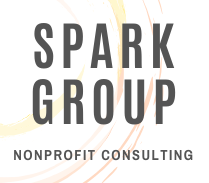How to Set Healthy Boundaries as a Nonprofit Leader
A common badge of honor that we wear as nonprofit professionals is the one that states “I’m overworked!” It is time to change that narrative!
You are a superhero! You are running a social service organization trying to solve the world’s most pressing problems on limited resources. I totally affirm that you are working your tail off and that you are tired!
However, it is imperative that we take the necessary steps to handle our stress in order to help move our organizations forward.
Additionally, an intentional focus on laying boundaries around work and home life helps signal to your team that they should take time for rest and family too.
Here are two ways to set healthy boundaries and support your organization at the same time.
Create a Culture of Proactivity
Often when I speak with nonprofit leaders, I repeat the same message over and over again. Some may call it redundant, but I think it is a critical message: We need to shift our organizations from REACTIVE environments to PROACTIVE environments.
REACTIVE behaviors:
Unexpected emergencies regularly sidetrack your days.
You don’t know how you will bring in revenue each month.
You lack impact data because you are too busy doing the work to think about metrics.
Reactivity is a cycle that wastes time on avoidable issues.
Proactivity anticipates challenges so you can prepare.
What does it mean to lead proactively?
For many of my clients, it means peace of mind, confidence, clarity on moving forward, and insight. So, how do you cultivate a proactive culture? One easy way is to set aside time. Block off one hour on your calendar each week and spend time considering these questions:
What worked well this week?
What needs improvement?
What exciting opportunities exist?
Guard this hour well. Don’t put it off for meetings or even emergencies. I promise this fire will still be there at the end of the hour but at least you will feel more energized to address the problem.
Take time off
A few months back I was very intentional about taking time off for my birthday– something I wasn’t predisposed to do. Here is what happened when I spent 24 hours NOT checking my email:
I’ll start by saying that— probably like you—I am an overachiever. I often feel restless if I have too much time on my hands, and have an uncanny ability to turn 30 minutes of “boredom” into hours of planning, building, and creating. This trait helps me professionally to tackle tasks and get things done. However, since the pandemic hit I’ve had a hard time hitting reset and allowing myself time to rest.
Well, on my birthday I decided that I was going to take the day off and unplug. I often talk to clients about setting up healthy work/life boundaries and therefore wanted to follow my own advice. I am good at putting away work when it is time to focus on my kids. I am much less skilled at taking that time for myself.
So here were my goals for the day:
Sleep in
NOT work (even the distracting fun stuff)
Eat Thai food and cake with my family
--
What happened when I shut down for a day?
I noticed the knee-jerk reaction to check my email about 50 times, and each time I felt proud of myself for ignoring that impulse.
I stayed off social media because even that took up too much space and energy
I gave myself permission to just veg out.
Want to know what I missed? Nothing! When I opened my email the next day—a bit more rested— I found there was one contract to sign which didn’t NEED my attention the day before, the blog post for the week was delayed by a day–which again was NOT a crisis, and I missed seeing a few very nice birthday messages.
Lead with your best self
When we put off vacations, work long hours, and don’t take the time to recharge we burn the candle at both ends. Nonprofit work is hard and taking time off allows you to bring your best self to the office when you return. It also models to your team that taking their time off is important as well.
As the old saying goes, it is necessary to put your own mask on first. Stressed-out frazzled leaders lead to chaotic organizations. You want the best for your clients and community and that starts with taking time for yourself.
If you’d like help setting up healthy organizational boundaries and policies contact Spark Group today.
⭐ Join my weekly newsletter where I share tons of exclusive tips, tools, grant opportunities, and resources to my subscribers. Subscribe on the Spark Group home page.




